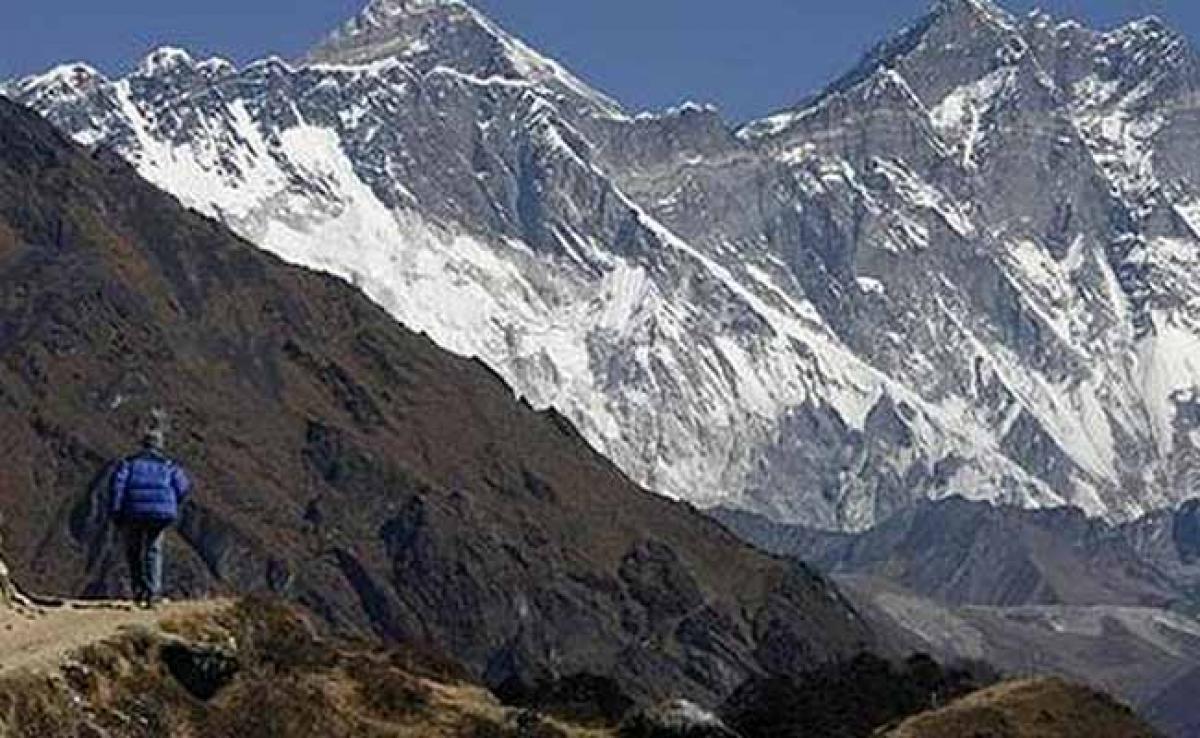Live
- Excitel CEO Vivek Raina on Southern Cities Drive Growth with Rising Regional Content Demand
- Karthika Deepotsavam celebrated at SV University
- Bengali Actress Uma Dasgupta Dies After Prolonged Illness
- AP Minister Ramanaidu addresses concerns on irrigation in assembly
- Police make preventive arrests of MPs Eatala and Aruna
- Farhan Akhtar Pays Tribute to Rezang La Heroes with First Look of ‘120 Bahadur’
- Water supply blocked to farmlands
- Borrowing cost still stressful: FM
- Gold rates in Delhi today surged, check the rates on 19 November, 2024
- Lagacharla women pour woes at NHRC
Just In

Climate change scientists are heading to the Himalayas in a bid to become the first team to successfully drill through the world\'s highest glacier located in the foothills of Mount Everest.
Climate change scientists are heading to the Himalayas in a bid to become the first team to successfully drill through the world's highest glacier located in the foothills of Mount Everest.
An international research team will spend up to six weeks working at an altitude of more than 5,000 metres on the Khumbu glacier in Nepal and will be using a specially adapted car wash unit to drill up to 200 metres into the ice.
Once the drilling has been completed, the team, led by Duncan Quincey from University of Leeds in the UK, will be able to study the glacier's internal structure, measure its temperature, how quickly it flows and how water drains through it.
"All the current data collected on these glaciers only just scratches the surface," Quincey said.
"The data we will collect during this expedition is critical for us to be able to forecast how this glacier, as well as others in the region, will respond to climate change," he said.
Glacier melt-water from across the Himalayan range supports the livelihoods of around 40 per cent of the world's population, researchers said. However, dams and lakes that form on the glacier present a significant risk of flash flooding for people living down- stream.
"Understanding what actually happens inside these glaciers is critical to developing a better understanding of how they flow so that we can better predict when dams that form on these glaciers are likely to be breached, releasing vast volumes of water to the valleys below," said Professor Bryn Hubbard from Aberystwyth University in the UK.
"This is a real risk in the Himalayas as it is in other regions such as the Andes, and has the potential to endanger the lives of thousands of people," said Hubbard.
Located in north-eastern Nepal, the 17 kilometre-long Khumbu glacier is often used by climbers on their way to Everest base-camp and flows from an altitude of 7,600 metres.
The team will be working at an altitude of over 5,000 metres and will have to contend with a number of physical and technical challenges.
Equipment weighing about 1,500kg will need to be transported to the drill site on the glacier. Half the equipment will be airlifted by helicopter and half will be carried up by locally-hired Sherpa, yaks and the research team.
Drilling will be done with a specially-adapted car wash unit that produces a jet of hot water at a pressure of up to 120 bar.
This is enough pressure to penetrate through road tarmac, researchers said. The team will travel to the Khumbu glacier in the foothills of Mount Everest this month. It will be the first of two trips.
The team is set to return for a second nine week expedition next year.

© 2024 Hyderabad Media House Limited/The Hans India. All rights reserved. Powered by hocalwire.com







